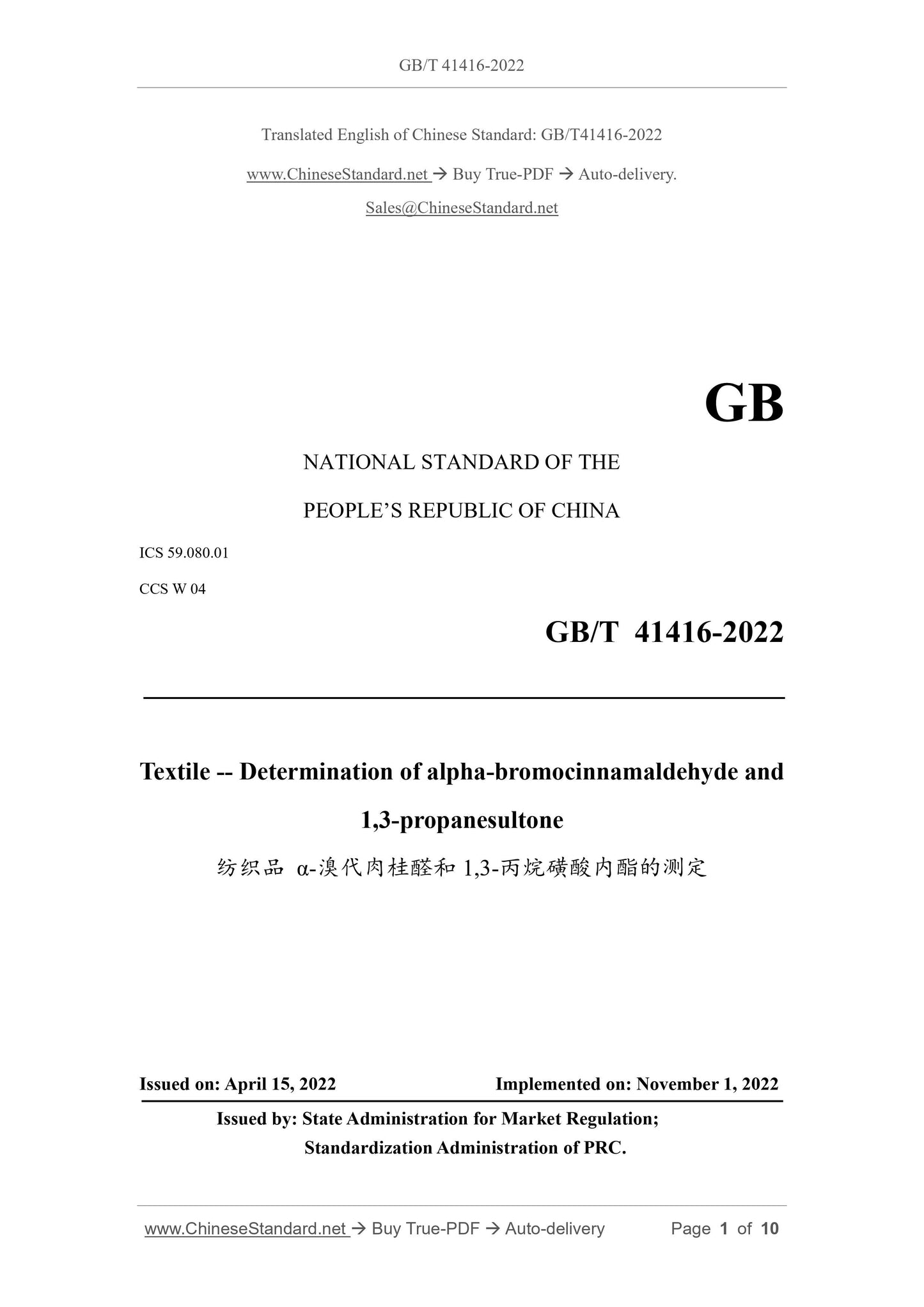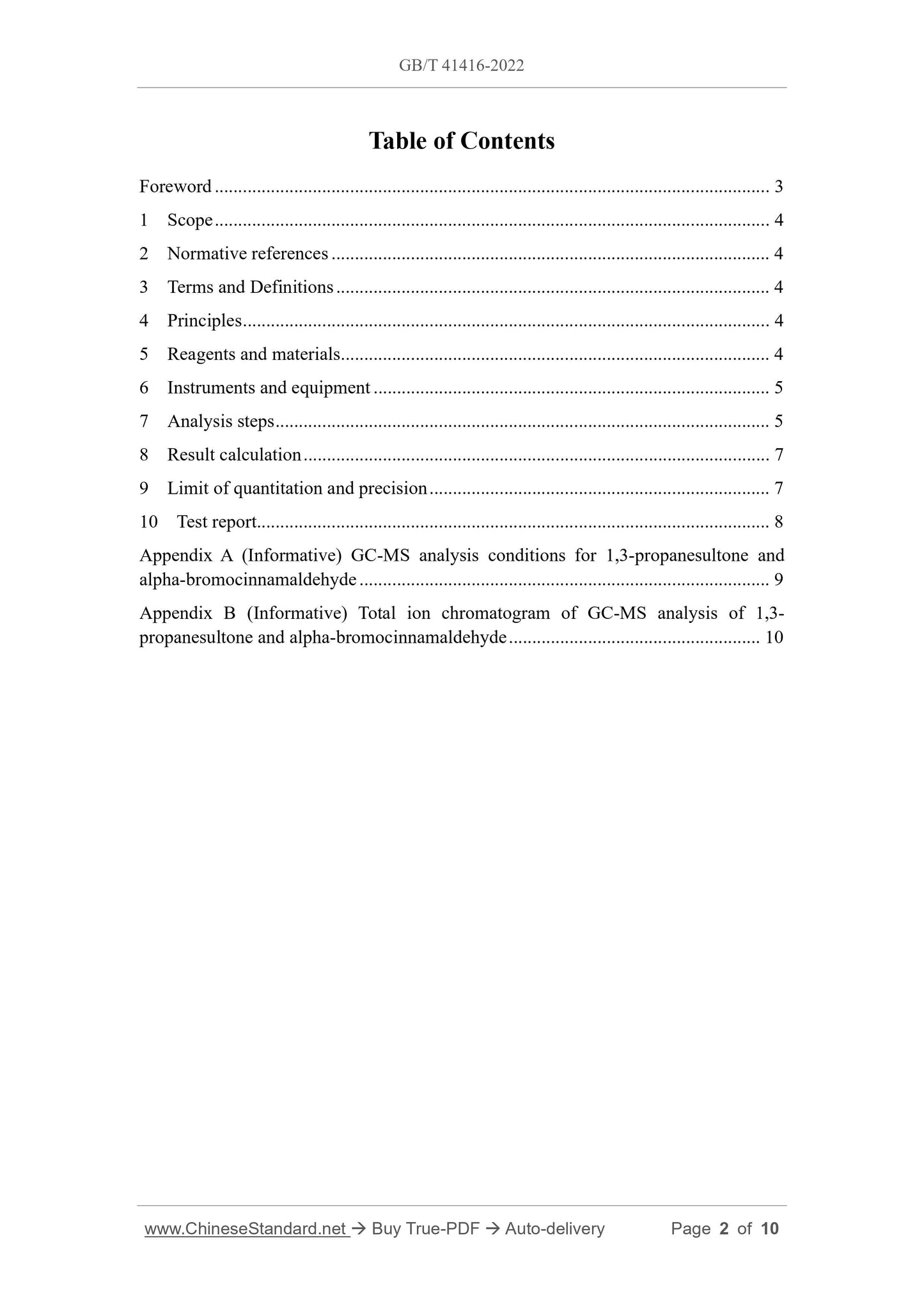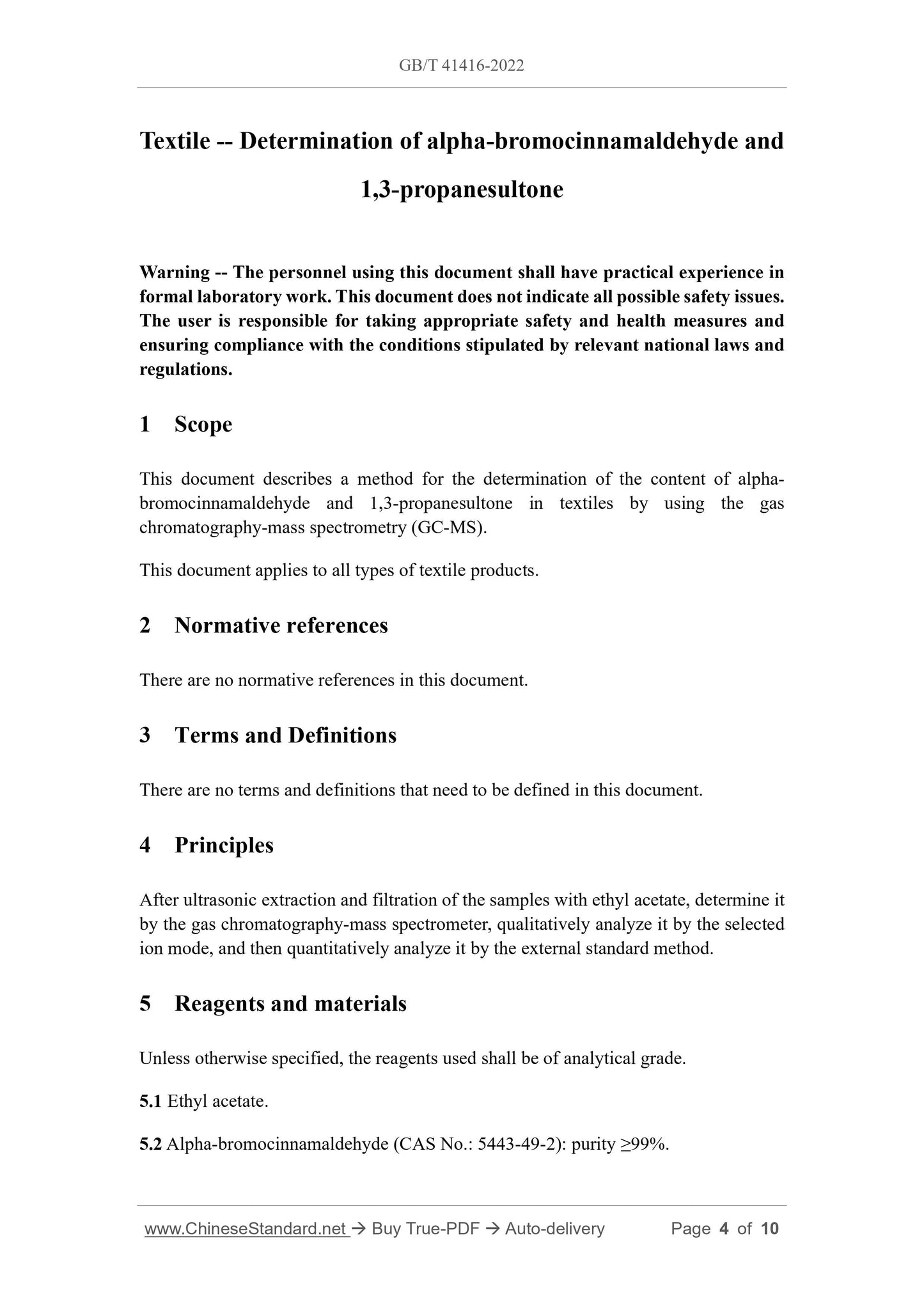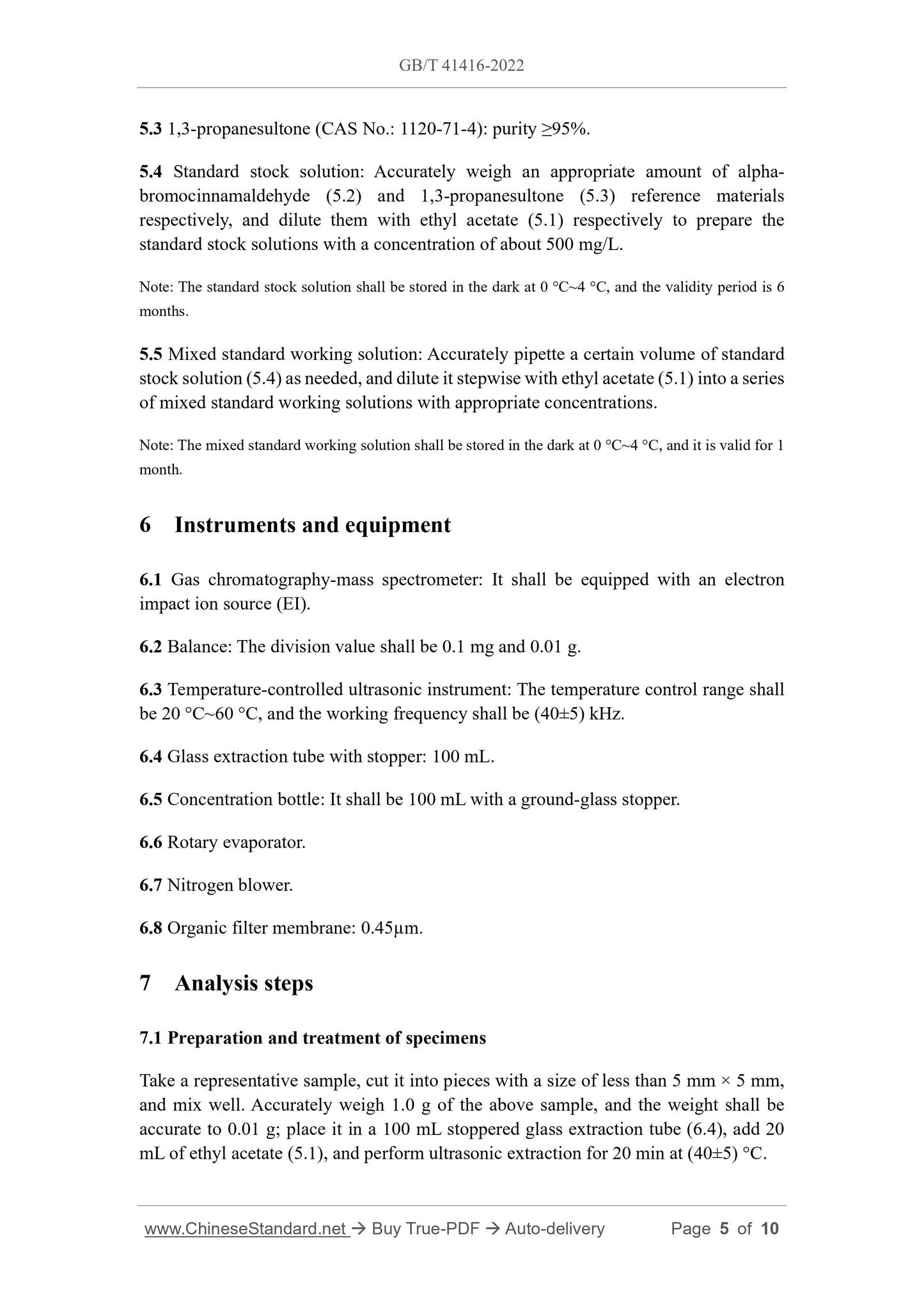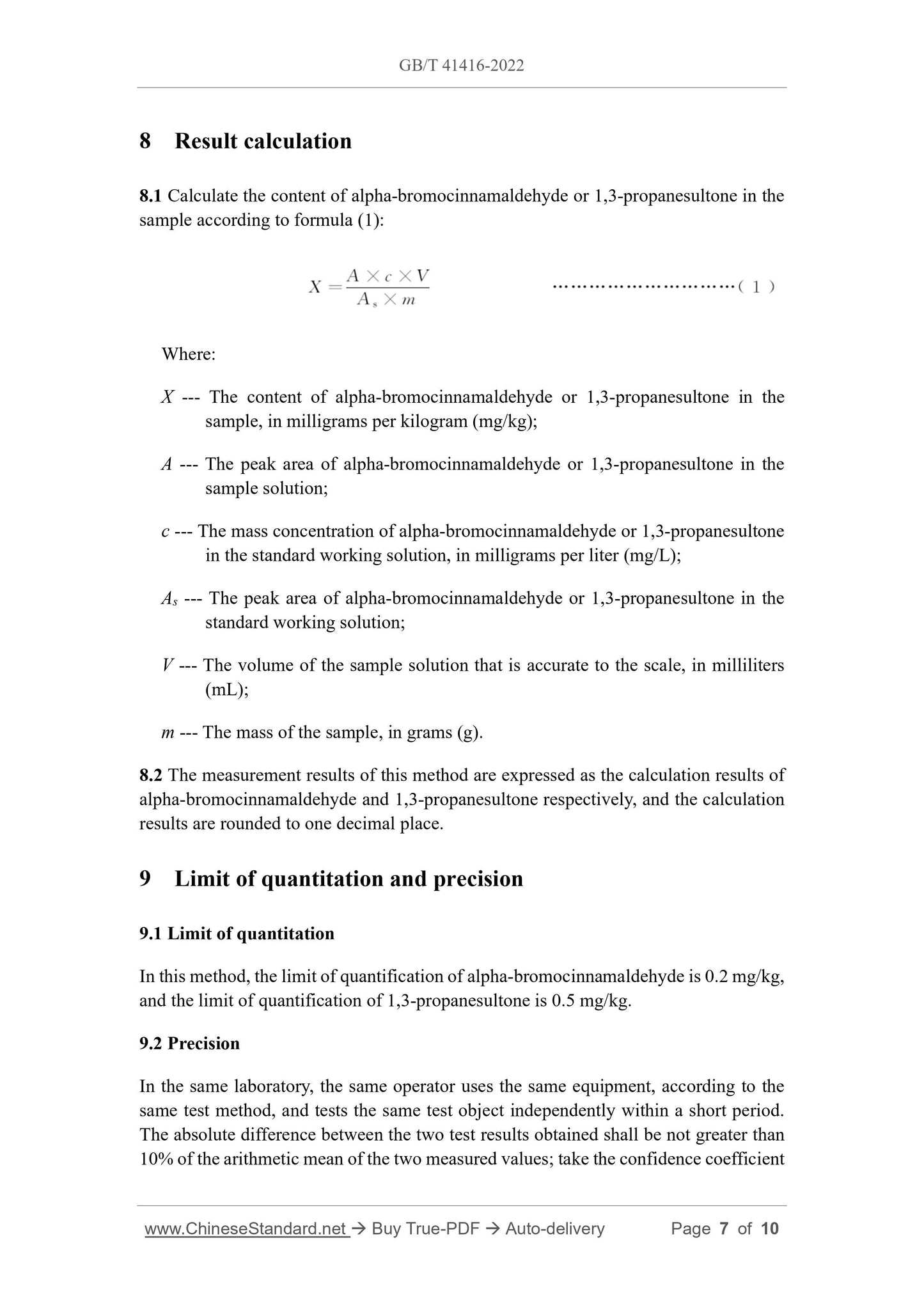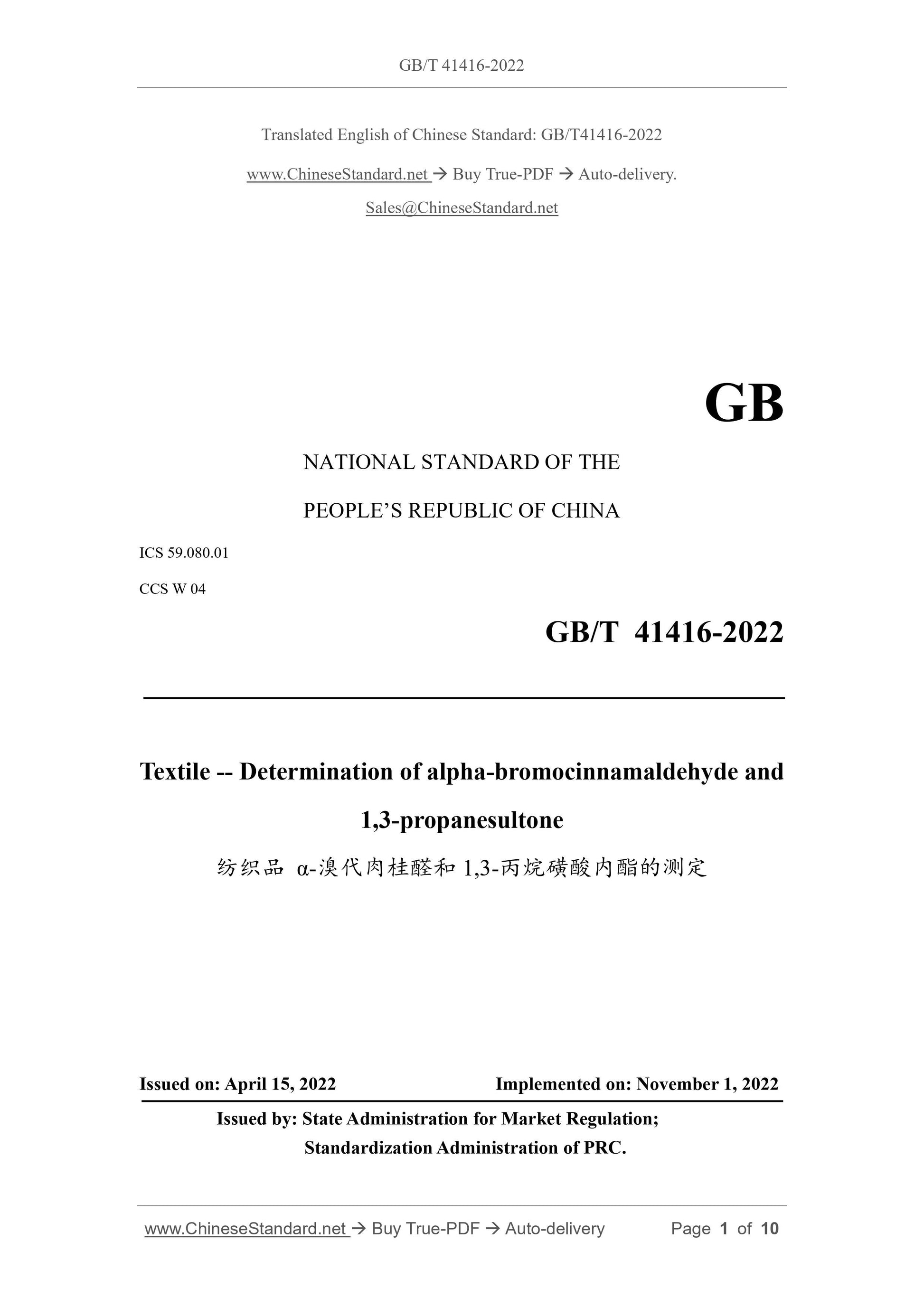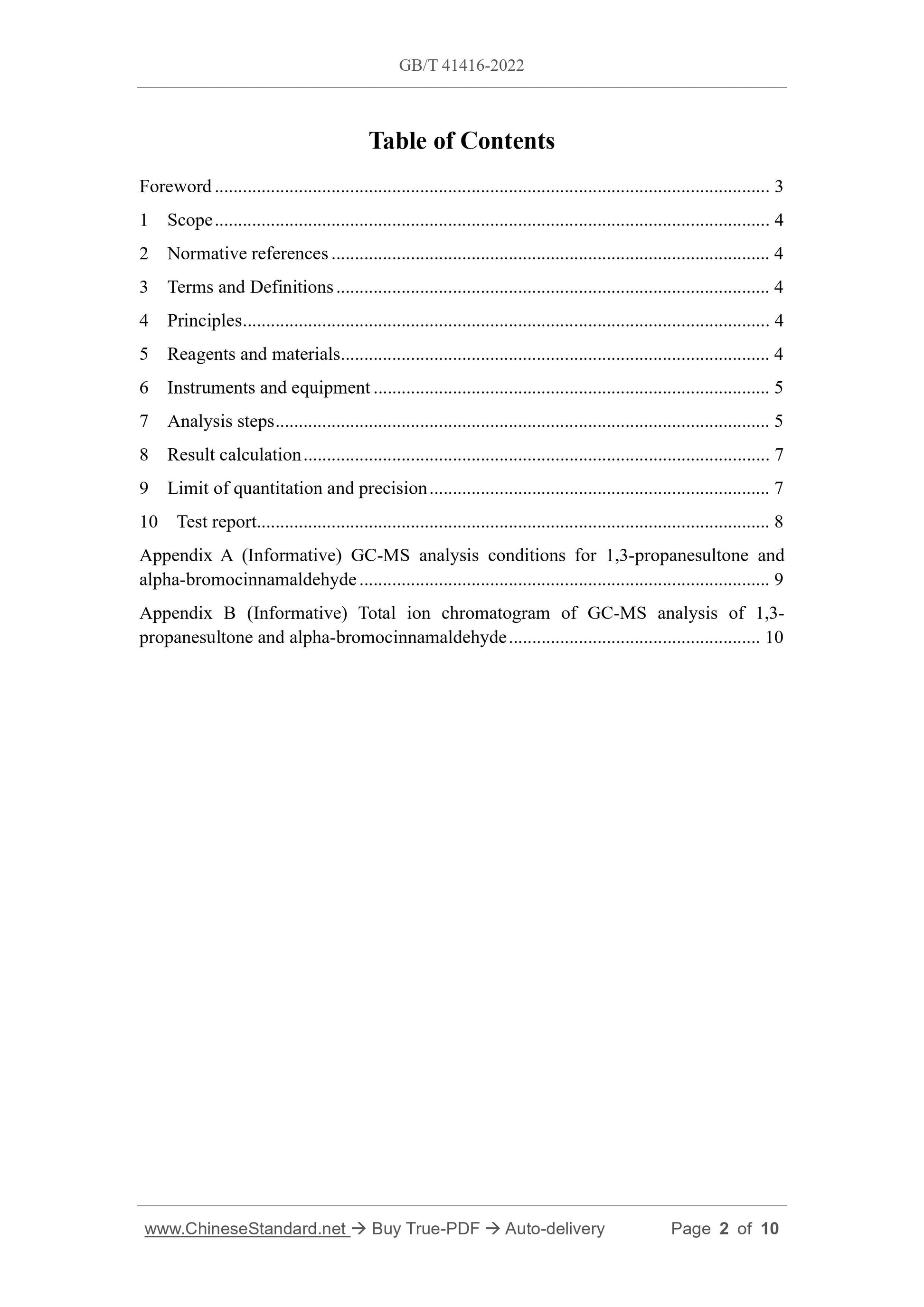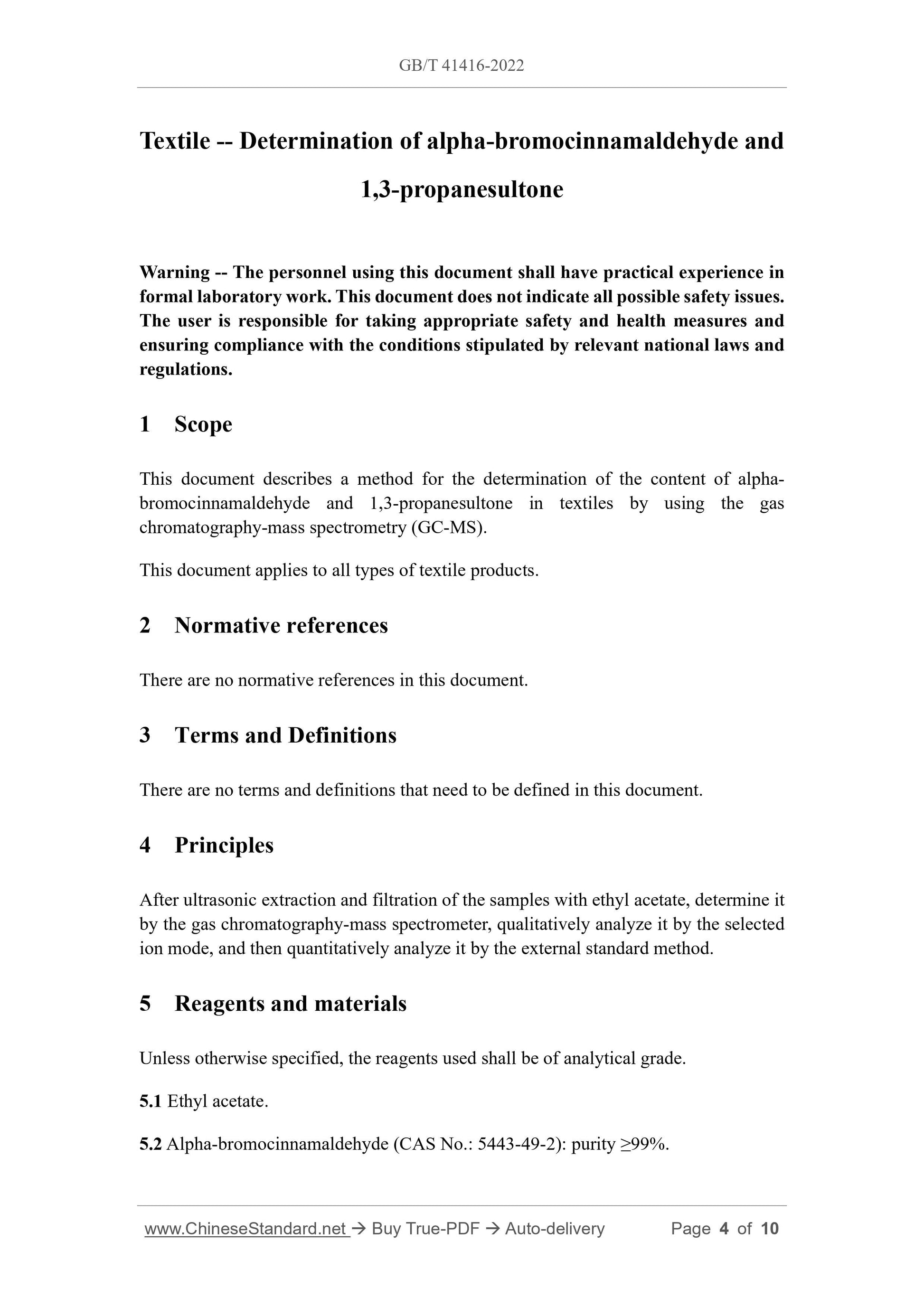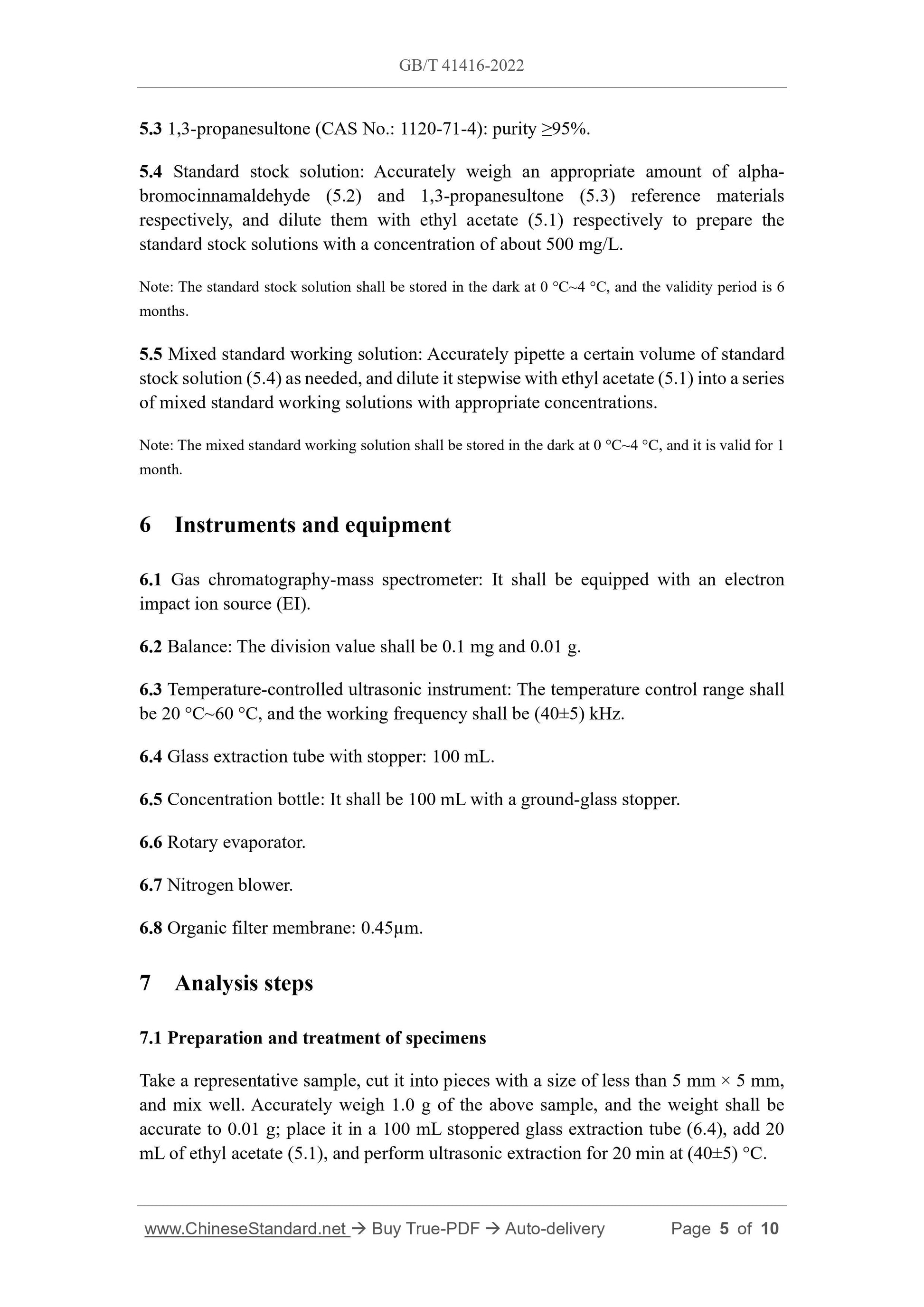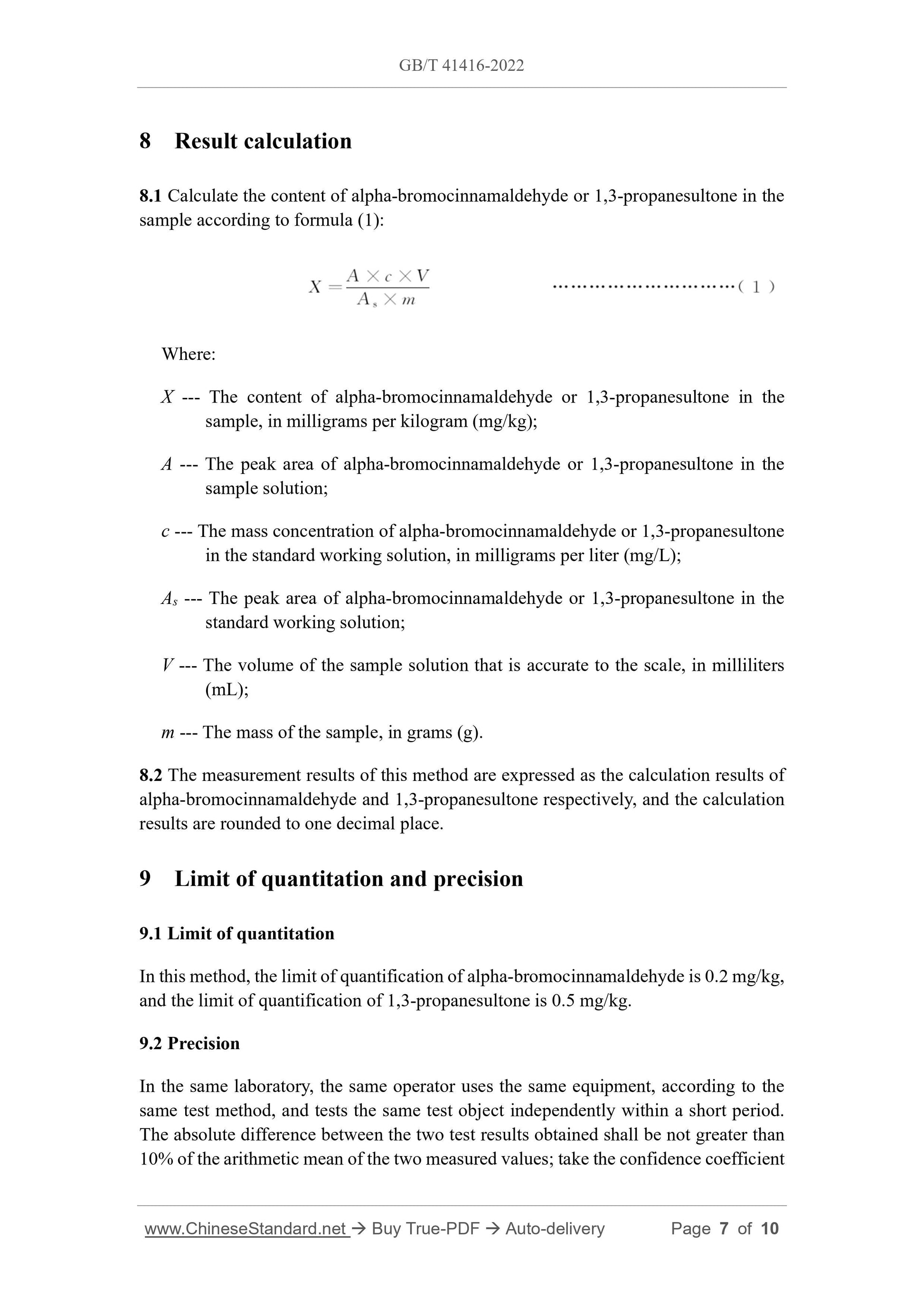1
/
of
5
www.ChineseStandard.us -- Field Test Asia Pte. Ltd.
GB/T 41416-2022 English PDF (GB/T41416-2022)
GB/T 41416-2022 English PDF (GB/T41416-2022)
Regular price
$170.00
Regular price
Sale price
$170.00
Unit price
/
per
Shipping calculated at checkout.
Couldn't load pickup availability
GB/T 41416-2022: Textiles - Determination of alpha-Bromo cinnamaldehyde and 1, 3-propanesultone
Delivery: 9 seconds. Download (and Email) true-PDF + Invoice.Get Quotation: Click GB/T 41416-2022 (Self-service in 1-minute)
Newer / historical versions: GB/T 41416-2022
Preview True-PDF
Scope
This document describes a method for the determination of the content of alpha-bromocinnamaldehyde and 1,3-propanesultone in textiles by using the gas
chromatography-mass spectrometry (GC-MS).
This document applies to all types of textile products.
Basic Data
| Standard ID | GB/T 41416-2022 (GB/T41416-2022) |
| Description (Translated English) | Textiles - Determination of alpha-Bromo cinnamaldehyde and 1, 3-propanesultone |
| Sector / Industry | National Standard (Recommended) |
| Classification of Chinese Standard | W04 |
| Word Count Estimation | 7,773 |
| Issuing agency(ies) | State Administration for Market Regulation, China National Standardization Administration |
Share
